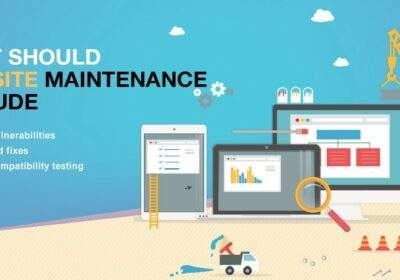
9 Aspects to Check Before Launching A Website

After weeks of hard work, you are finally done with the design of the website and are ready to be online so that many people can admire your finished work. But are you really sure that you have done all the necessary checks?
In the design process, there is a particular phase of testing. Often, this test phase is used to make minimal adjustments or completely change elements such as typography. Any error or detail that is overlooked could have consequences on the bounce rate or user experience of the website. To avoid such situations, it is advisable to perform a final check and divide the last review into parts to focus on a single aspect of the site for each review. In this article, we mention the aspects the mobile app development company should review last before the site launches.
1. Design
The first aspect you should verify is the design. Later you can check the functionality of the site, but for now, it is better to focus only on the visual aspect.
2. Compatibility in various browsers
Browsers render content differently, so it’s important that you perform tests to verify how your website looks in these browsers. In principle, just consider the most popular browsers like Chrome, Firefox, Microsoft Edge, Safari, and Opera. These five are the main ones that most users use, so it is enough to verify how your site looks in each of these browsers.
The elements that you should look at are the general appearance of the layout, the text alignments, the type of font, and their respective sizes, logo sizes, colors, and images. It is only necessary to verify how each of these elements looks to notice if you should make any specific changes for any of them.
3.Compatibility with various devices
Like the browser review, it is important to verify the appearance of the site on different devices, starting with browsers and going through mobile devices and even smart TVs. Each of these devices has a series of unique functions that you should make sure to take advantage of as is the touch screen on tablets and smartphones.
Again, it is important that you look at the layout, texts, fonts, colors, and images. Verifying that each of these elements is properly presented on each device is essential to provide a good user experience regardless of the device used by visitors to access the website.
4. Functionality
Design and functionality are characteristics that are associated because there can be no good user experience without both. But as we already mentioned, it is much more effective to divide them when making the final review so that you can focus more on a single aspect and verify that the elements not only look good but work and respond as planned.
5. Buttons and images
On a website, there are several elements with which the user can interact, from the names of sections in the menu to social media buttons in the footer. These elements usually “react” when the cursor rests on them presenting some kind of information in a visual or textual way, as is the case of images that activate annotations or legends only when the cursor is over them.
You should not only check if they react when the cursor is placed on any of these elements but also if they are modified or linked to another page when the user clicks on any of them as is the case of the sections in the menu bar.
6. Integration with other services
Even if you think that your simple website does not use any type of integration, today a large majority of sites use integrations to perform certain tasks. A common example of integration with other services is web forms because they require one more layer of programming for proper operation.
Some of the integrations that you should verify on your website can be contact forms, email newsletters, RSS, content managers, social media widgets, etc.
7. SEO
Once you have verified the design, functionality, and content of your website, it is time to move on to SEO. There are a number of different tasks that you can perform to optimize the SEO of your website. We mention two of them:
8. Semantic structure
Search engines interpret the website using HTML tags to verify content. In this way, when keywords are entered into a search engine, they know which sites should be displayed based on these words.
Now with the use of HTML5, you can optimize your website with the new tags and attributes that have been added in this new version. There are a variety of tags to indicate the type of content, so we encourage you to use them to improve the SEO aspect of the site.
9. Metadata
Apart from verifying the HTML structure of the site, you can optimize your website for search engines by naming and describing the pages of your site. For them, you can make use of metadata such as the title and description of pages.
In the case of the title, it is visible to both search engines and users as it will be displayed in the search results. It is also shown in the browser tab each time users browse your site. You can optimize the titles using short names (less than 70 characters) that describe the page, you can also include keywords in front of the title.
The descriptions are also visible to visitors and are short sentences that briefly describe the content of your website. They are usually shown under the meta title in the search results. To optimize these descriptions, you can include keywords and keep the text short.















